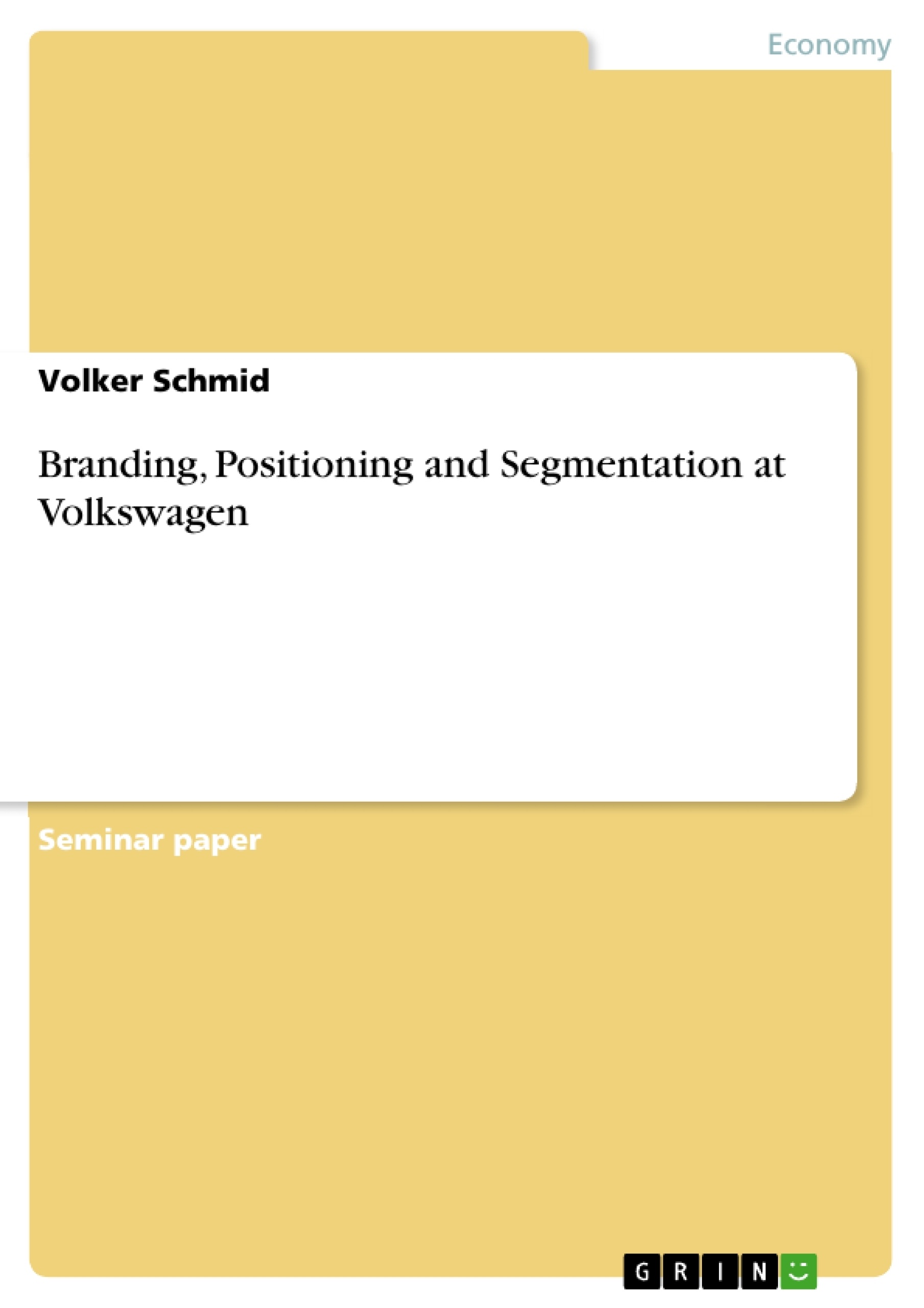This paper analysis the case study “VW Phaeton” by Röhm and Murphy (2005) about the launch of a luxury car by Volkswagen. Since the introduction of the VW Phaeton in May 2002, Volkswagen has been under pressure as the company did not reach their sales forecast, experiencing dramatic financial losses (Weernink, 2002).
It comments on the strategy of VW in terms of branding and positioning. It also considers segmentation, niche and mass marketing as essential issues for VW. Various aspects of these issues are discussed as well as their relationship to customer loyalty, and how they contribute to a business success. Finally, it is summarised why the future of the VW Phaeton is considered to be a bleak.
It could be shown that positioning is an outgrowth of segmentation, and therefore, presents an integral part of VW’s strategy. The paper shows that VW introduced the VW Phaeton to move up-market, and to polish the VW brand. However, the company did underestimate their own brand, which is associated with a people’s car. At the same time, Volkswagen missed to serve highly potential segments in the middle-class segment. In order to position the VW Phaeton in the upper-class, a comprehensive marketing campaign was launched, which could not add the missing emotional and prestige value to the VW brand. In the final section, it is argued why the future of the VW Phaeton is a bleak - mainly because of a strategic failure regarding the branding strategy.
Table of Contents
- Abstract
- Table of Contents
- List of Figures
- Introduction
- Branding Strategy
- Segmentation Strategy
- Positioning Strategy
- The Future of the VW Phaeton
- References
Objectives and Key Themes
This paper analyses the case study "VW Phaeton" by Röhm and Murphy (2005) regarding the launch of a luxury car by Volkswagen. The paper examines the branding, segmentation, and positioning strategies employed by Volkswagen in an attempt to enter the luxury market. It also discusses the impact of these strategies on customer loyalty and business success. Finally, it evaluates the future prospects of the VW Phaeton.
- Branding Strategy
- Segmentation Strategy
- Positioning Strategy
- Customer Loyalty
- Business Success
Chapter Summaries
The introduction sets the context for the paper by outlining the case study's focus on the launch of the VW Phaeton. It also identifies the two key questions addressed by the paper.
The chapter on branding strategy discusses the challenges faced by Volkswagen in positioning the Phaeton as a luxury car. It examines the company's approach to managing its brand portfolio, emphasizing the importance of brand equity and brand consistency. This section explores the challenges of repositioning a brand that is traditionally associated with affordability and reliability.
The chapter on segmentation strategy examines the target audience for the VW Phaeton, analyzing the complex dynamics of the luxury car market. This section investigates how Volkswagen's segmentation strategy aligned with its overall branding and positioning objectives. It examines the various segments within the luxury car market and explores the potential for Volkswagen to successfully target a niche or mass market.
The chapter on positioning strategy explores how Volkswagen sought to position the VW Phaeton in the competitive landscape of the luxury car market. This section examines the company's marketing strategies, including the role of advertising and communication, in shaping consumer perceptions of the Phaeton. It also discusses the challenges of establishing a strong brand identity and overcoming the "value for money" perception associated with the Volkswagen brand.
The chapter on the future of the VW Phaeton provides a critical assessment of the car's prospects, considering the factors that could contribute to or hinder its success. This section analyzes the company's overall strategy and the factors that may influence future sales and customer perception.
Keywords
This paper explores key concepts in marketing, focusing on branding, segmentation, positioning, customer loyalty, and business success. It examines the strategic challenges faced by Volkswagen in introducing a luxury car like the VW Phaeton, including the need to reposition a brand traditionally associated with affordability. It analyzes the factors contributing to successful marketing, including brand management, target audience identification, and effective communication strategies.
- Quote paper
- Volker Schmid (Author), 2005, Branding, Positioning and Segmentation at Volkswagen, Munich, GRIN Verlag, https://www.grin.com/document/38128




